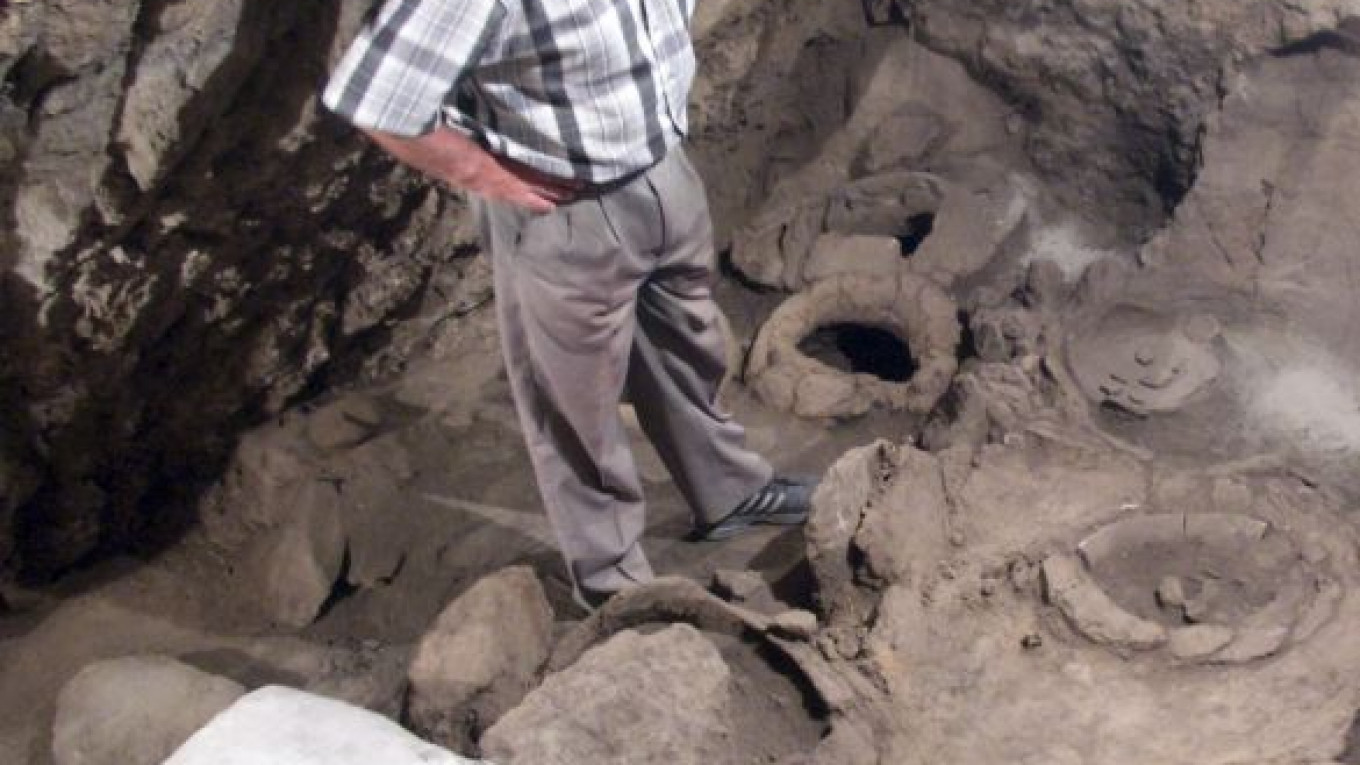WASHINGTON — Archaeologists have unearthed the oldest winemaking facility ever found, using biochemical techniques to identify a dry red vintage made about 6,000 years ago in what is now southern Armenia.
The excavation paints a picture of a complex society where mourners tasted a special vintage made at a caveside cemetery, the researchers reported this week in the Journal of Archaeological Science.
"This is the world's oldest known installation to make wine," Gregory Areshian of the University of California Los Angeles, who helped lead the study, said in a telephone interview.
Carbon dating showed that a desiccated grape vine found near a wine press was grown around 4000 B.C., his team reported.
This makes it 1,000 years older than any other winemaking facility discovered, the team from Armenia, the United States and Ireland reported.
The team found the world's oldest leather shoe, about 5,500 years old, at the same cave complex last year.
The wine press would have held a few gallons of juice and crushed grapes, likely working with the time-honored technique of barefoot stomping, Areshian said.
"This was a relatively small installation related to the ritual inside the cave. For daily consumption they would have had much larger wine presses in the regular settlement," said Areshian, who was deputy prime minister of Armenia in 1991.
Chemical traces point to grape juice and, given the lack of refrigeration, the juice would certainly have been fermented into wine, Areshian said.
"We also know that still, in the villages in the vicinity, the culture of wine is very old and traditional," he said.
The rich red wines produced there are merlots and cabernet sauvignons, he said.
The expedition, paid for in part by the National Geographic Society, also uncovered copper processing equipment. Areshian said the team would detail those findings later.
The cave complex, known as Areni-1, is in the Little Caucasus Mountains near Armenia's southern border with Iran.
The press itself is a shallow clay basin about one meter in diameter, surrounded by grape seeds and dried-out grape vines.
The team found grave mounds nearby and obsidian tools — indicating that some complicated trade was going on. The closest source of obsidian, a black glassy mineral, is 55 to 70 kilometers away, a three-day walk, Areshian said.
"We can say that this was a quite complex society formed by multiple communities," he said.
A Message from The Moscow Times:
Dear readers,
We are facing unprecedented challenges. Russia's Prosecutor General's Office has designated The Moscow Times as an "undesirable" organization, criminalizing our work and putting our staff at risk of prosecution. This follows our earlier unjust labeling as a "foreign agent."
These actions are direct attempts to silence independent journalism in Russia. The authorities claim our work "discredits the decisions of the Russian leadership." We see things differently: we strive to provide accurate, unbiased reporting on Russia.
We, the journalists of The Moscow Times, refuse to be silenced. But to continue our work, we need your help.
Your support, no matter how small, makes a world of difference. If you can, please support us monthly starting from just $2. It's quick to set up, and every contribution makes a significant impact.
By supporting The Moscow Times, you're defending open, independent journalism in the face of repression. Thank you for standing with us.
Remind me later.






